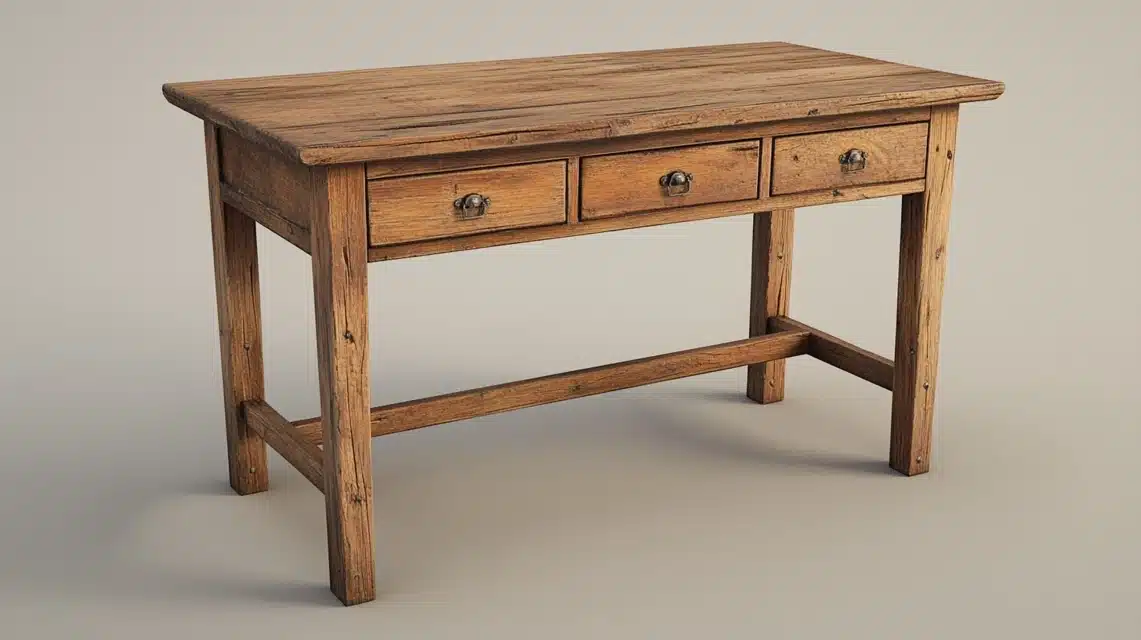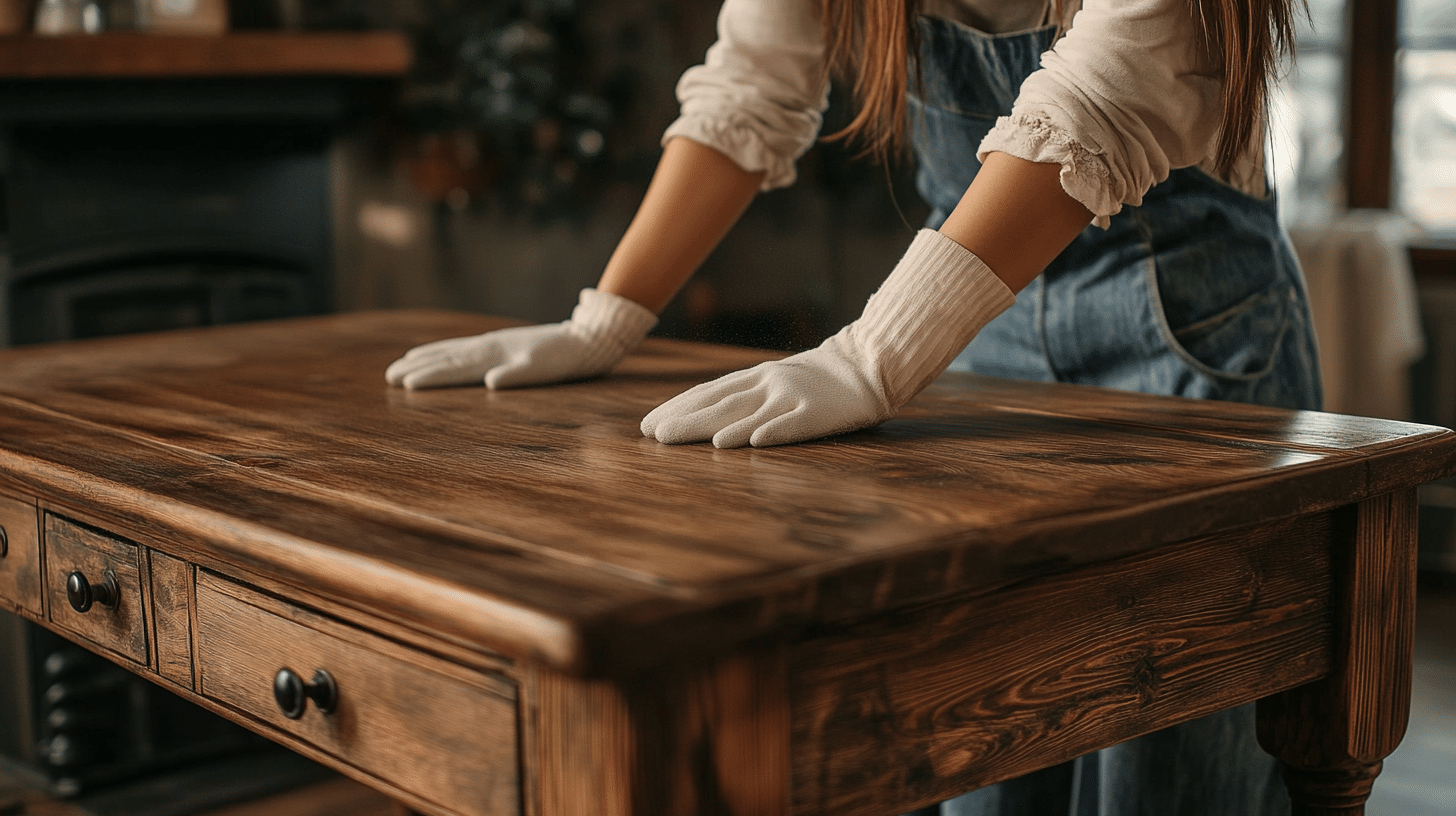How to Get Musty Smell Out of Wood Furniture Easily
Your questions keep coming in, and I’m excited to answer them! Here’s what folks like you want to know about fixing those musty wood smells.
Check out this video about how I easily removed the musty smell from my wood furniture.
Old wood furniture fills your home with that unpleasant, musty odor. I’ve dealt with this problem in my antique store for years, and I know how frustrating it can be to live with that smell.
I want to share some methods that worked for me to remove musty smells from wood furniture. These steps are quick and simple, using items you likely have at home.
In this guide, I’ll walk you through:
- Basic cleaning methods that work right away
- Natural ways to absorb bad smells
- Steps to prevent the odor from coming back
- Tips to keep your furniture fresh long-term
Let me show you how to make your wood furniture smell fresh again.
6 Steps to Prepare Your Furniture for Odor Removal
- Step 1: First, take your furniture outside or to a well-ventilated area. I find that working in fresh air makes the cleaning process much more effective. Plus, it keeps those musty smells from spreading through your home.
- Step 2: Next, remove all hardware, like drawer pulls, knobs, and hinges. I learned through experience that cleaning around these pieces often leaves spots untouched, which can trap unwanted odors.
- Step 3: Take time to empty all drawers and storage spaces. From my experience, old papers and forgotten items can hold onto those musty smells, making your cleaning efforts less effective.
- Step 4: Use a soft brush or vacuum with a brush attachment to clean every surface, corner, and crevice. When I do this, I pay special attention to joints and seams where dust likes to hide.
- Step 5: Look for any signs of mold or mildew, as these need special treatment. I suggest checking dark spots carefully – they might look like simple stains but could indicate a bigger problem.
- Step 6: Finally, inspect your furniture for loose joints or damaged areas. Making repairs now will prevent moisture from getting trapped later, which could bring those musty smells back.
Prime Cause of Getting Musty Smell

- Excess Moisture
- Wood soaks up water from humid air like a sponge
- Damp basements and humid rooms are often the culprits
- When moisture gets trapped, it creates the perfect spot for mold growth
- Poor Air Flow
- Furniture placed too close to walls blocks air movement
- Tight storage spaces trap moisture against wood surfaces
- Limited ventilation stops the wood from drying properly
- Temperature Changes
- Daily heat and cold cycles make wood expand and contract
- These movements let moisture work deeper into the wood
- Basements and attics often have the worst temperature swings
- Worn-Out Finishes
- Old protective coatings break down with time
- Damaged finishes can’t keep moisture out anymore
- Bare wood spots easily soak up smells and dampness
- Dirt Build-Up
- Dust and dirt collect in wood grain over time
- These particles mix with moisture
- The mix of dirt and water leads to that musty smell
- Cleaning helps, but trapped particles need special attention
Certain Effective Methods to Remove the Musty Smell

Method 1: Sunlight and Fresh Air Treatment
I always start with nature’s own cleaning service. Place your furniture outside on a sunny, breezy day. The sun’s warmth opens up the wood’s pores while fresh air pushes out those trapped odors.
I usually leave pieces out for several hours, turning them every so often to make sure all sides get equal exposure.
Method 2: White Vinegar Solution
I mix equal parts white vinegar and water in a spray bottle. After testing on a small hidden area, I spray this solution lightly over the wood surfaces.
The vinegar naturally kills odor-causing bacteria and mold. I make sure to wipe the surface with a clean, dry cloth afterward to prevent any moisture from lingering.
Method 3: Baking Soda Application
From my experience, baking soda works wonders for absorbing smells. I sprinkle it generously inside drawers and on surfaces, letting it sit overnight.
The next day, I vacuum it up thoroughly. For tough smells, I might repeat this process a few times.
Method 4: Kitty Litter Technique
I’ve found that clay-based kitty litter works really well. I fill small open containers with fresh litter and place them inside drawers or cabinets.
The clay naturally pulls moisture and odors from the wood. I typically leave these for about a week.
Method 5: Essential Oil Treatment
After removing the musty smell, I like to add a pleasant scent. I put a few drops of cedar or tea tree oil on cotton balls and placed them in corners and drawers.
These oils not only smell good but also help prevent future mold growth.
Method 6: Charcoal Absorption
I place small bowls of activated charcoal near or inside the furniture. The charcoal acts like a natural filter, pulling out both moisture and bad smells.
I usually leave these in place for several days to get the best results.
How Long Will the Odor Removal Process Take?
| Stage | Activity | Duration |
|---|---|---|
| Basic Cleaning | Initial cleaning and drying | 4-6 hours |
| Sunlight exposure | 6-8 hours | |
| Air-out period | 24-48 hours | |
| Treatment Time | Vinegar solution | 1-2 days with repeat applications |
| Baking soda absorption | 24 hours per application | |
| Activated charcoal | 3-5 days to fully absorb odors | |
| Kitty litter method | 5-7 days for best results | |
| Results Timeline | Light smells | 2-3 days total |
| Medium odors | 4-5 days | |
| Strong, musty smells | 7-10 days | |
| Very old, deep-set odors | Up to 2 weeks |
Remember: The time needed changes based on:
- How strong the smell is
- How old your furniture is
- The type of wood
- Your room’s airflow
- Local weather and humidity
Is the Odor Harmful to My Health or Home Environment?
From my research and experience with wood furniture, here’s what you need to know about musty odors:
1. Health Effects
- The smell itself isn’t toxic, but it signals possible mold growth
- Mold spores can cause breathing issues
- Some people may experience:
- Mild allergic reactions
- Headaches
- Sinus congestion
- Eye irritation
2. Impact on Your Home
- Musty smells can spread to other furniture
- The odor might seep into:
- Carpets
- Curtains
- Clothing
- Wall surfaces
- Moisture causing the smell can damage:
- Wood floors
- Wall paint
- Wallpaper
3. When to Take Action
- If you notice:
- A strong, persistent, musty smell
- Dark spots on the wood
- Visible mold growth
- Changes in wood texture
- If family members show any health symptoms
Good news: Proper cleaning and care can fix most musty smells. Starting treatment early helps prevent both health issues and furniture damage.

Conclusion
I hope my tips help you tackle those musty smells in your wood furniture. I’ve used these methods in my antique store, and they really do work wonders.
Remember, getting rid of musty odors takes time and patience. Start with good cleaning, try the natural remedies I shared, and stick to regular maintenance. Your nose and your furniture will thank you!
If you’re dealing with strong smells that won’t go away after trying these methods, or if you spot any mold, it might be time to call a professional. Better safe than sorry!
Want to share your experience or have questions? Drop a comment below. I’d love to hear how these tips worked for you and what methods you found most helpful.
Now go ahead and give your furniture that fresh start it deserves!
Frequently Asked Question
Can I Use Household Items, or Do I Need Specialized Products?
Yes, common items like white vinegar, baking soda, and kitty litter work great. I’ve found these household products just as effective as store-bought options. Save your money and start with what’s in your kitchen.
Can I Use Essential Oils to Mask the Smell?
No, don’t just mask the smell with oils. I recommend removing the musty odor first. After proper cleaning, you can use oils like cedar or tea tree to add freshness and help stop mold growth.
Will Painting the Furniture Eliminate the Odor?
Paint alone won’t fix the problem. I’ve learned that trapped odors need proper cleaning first. If you paint over musty wood, the smell might come through the paint later. Clean thoroughly before painting.







